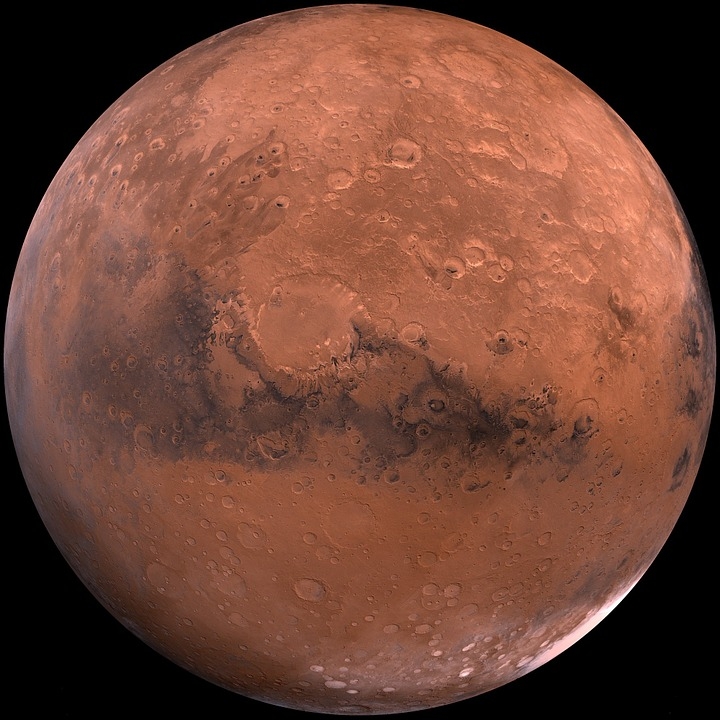It has been several months since NASA’s Opportunity rover took its last photo before dying out in the wilderness of the Red Planet. Recently, the space agency revealed the panorama shot the rover took.
Express reports that the Opportunity rover captured a series of snapshots over the 15 years it was roaming the Red Planet. As the space agency pieced everything together, it revealed a panoramic shot of the planet’s wilderness before it finally died out. The final snapshot was taken from its last resting place. According to Mr. John Callas of the agency’s Jet Propulsion Laboratory, the panoramic shot of Mars was why the Opportunity rover mission was so historic.
Callas went on to point out some of the details of the panoramic shot, such as the Endeavor crater as well as the Perseverance valley. All of these sights were taken by the rover in its pristine condition. Part of the rover’s mission was discovering what was once abundant on Mars, such as water sources, which gave scientists and space agencies everywhere better understanding of the neighboring planet.
The Opportunity rover’s cause of death was due to a planet-wide dust storm that triggered loss of power and resulting in system failure. While the rover’s journey came to an end as it died out on the planet, it still made history with its 15 years of traveling, equivalent to 5,000 Martian “sols” - 39 minutes longer than an Earth day.
Meanwhile, it was also reported that NASA is already nearing its last stages in completing construction of its newest rover for the upcoming Mars mission in 2020. This new rover will be searching for signs of life on the Red Planet, therefore laying the foundation to send humans to Mars in the coming years. The rover has yet to be named, but the space agency has already unveiled it on the way to the Kennedy Space Center where the three other parts will be pieced together.
This rover is scheduled to leave Earth come July, and ideally land on a dry lake bed that is on the planet’s surface. The rover will then look for signs of fossils that could indicate the life that was once on the planet.



 Genetic diseases: How scientists are working to make DNA repair (almost) a piece of cake
Genetic diseases: How scientists are working to make DNA repair (almost) a piece of cake  Orbital resonance − the striking gravitational dance done by planets with aligning orbits
Orbital resonance − the striking gravitational dance done by planets with aligning orbits  How do airplanes fly? An aerospace engineer explains the physics of flight
How do airplanes fly? An aerospace engineer explains the physics of flight  The mystery of consciousness shows there may be a limit to what science alone can achieve
The mystery of consciousness shows there may be a limit to what science alone can achieve  Archeoastronomy uses the rare times and places of previous total solar eclipses to help us measure history
Archeoastronomy uses the rare times and places of previous total solar eclipses to help us measure history  Eggs from men, sperm from women: how stem cell science may change how we reproduce
Eggs from men, sperm from women: how stem cell science may change how we reproduce  If life exists on Jupiter’s moon Europa, scientists might soon be able to detect it
If life exists on Jupiter’s moon Europa, scientists might soon be able to detect it  Tatahouine: 'Star Wars meteorite' sheds light on the early Solar System
Tatahouine: 'Star Wars meteorite' sheds light on the early Solar System  What is minoxidil, the anti-balding hair growth treatment? Here’s what the science says
What is minoxidil, the anti-balding hair growth treatment? Here’s what the science says  Why now is the time to address humanity’s impact on the moon
Why now is the time to address humanity’s impact on the moon  Alpha, beta, theta: what are brain states and brain waves? And can we control them?
Alpha, beta, theta: what are brain states and brain waves? And can we control them?  Dark energy is one of the biggest puzzles in science and we're now a step closer to understanding it
Dark energy is one of the biggest puzzles in science and we're now a step closer to understanding it  Larger and more frequent solar storms will make for potential disruptions and spectacular auroras on Earth
Larger and more frequent solar storms will make for potential disruptions and spectacular auroras on Earth  Synthetic human embryos let researchers study early development while sidestepping ethical and logistical hurdles
Synthetic human embryos let researchers study early development while sidestepping ethical and logistical hurdles 






























